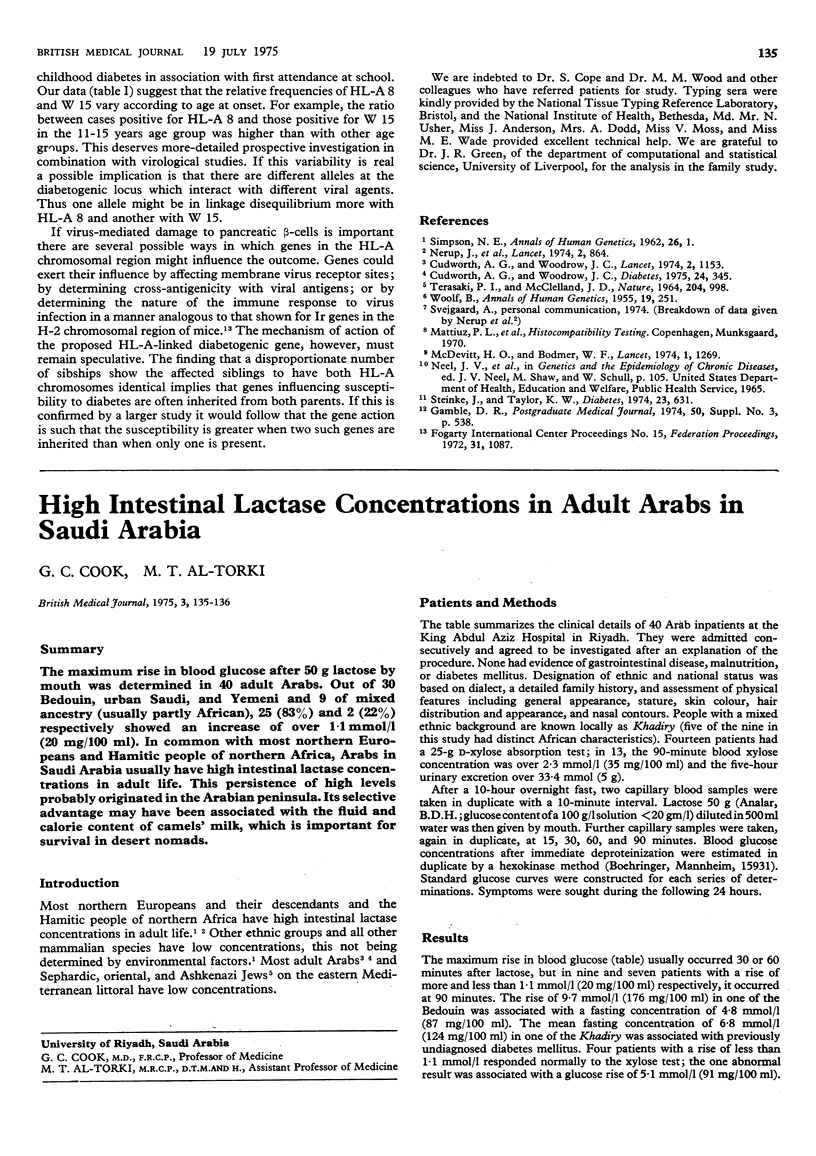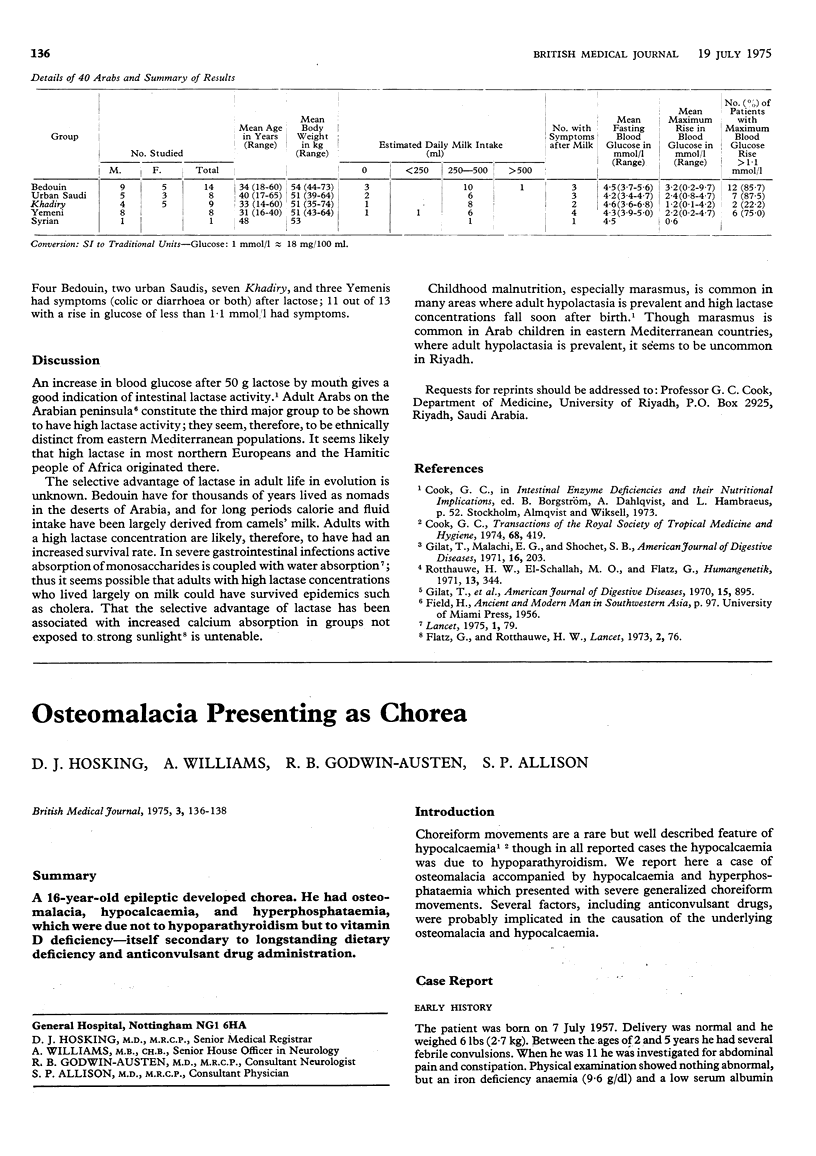Abstract
The maximum rise in blood glucose after 50 g lactose by mouth was determined in 40 adult Arabs. Out of 30 Bedouin, urban Saudi, and Yemeni and 9 of mixed ancestry (usually partly African), 25 (83%) and 2 (22%) respectively showed an increase of over 1-1 mmol/1 (20 mg/100 ml). In common with most northern Europeans and Hamitic people of northern Africa, Arabs in Saudi Arabia usually have high intestinal lactase concentrations in adult life. This persistence of high levels probably originated in the Arabian peninsula. Its selective advantage may have been associated with the fluid and calorie content of camels' milk, which is important for survival in desert nomads.
Full text
PDF

Selected References
These references are in PubMed. This may not be the complete list of references from this article.
- Cook G. C. Malabsorption in Africa. Trans R Soc Trop Med Hyg. 1974;68(6):419–436. doi: 10.1016/0035-9203(74)90065-0. [DOI] [PubMed] [Google Scholar]
- Flatz G., Rotthauwe H. W. Lactose nutrition and natural selection. Lancet. 1973 Jul 14;2(7820):76–77. doi: 10.1016/s0140-6736(73)93267-4. [DOI] [PubMed] [Google Scholar]
- Gilat T., Malachi E. G., Shochet S. B. Lactose tolerance in an Arab population. Am J Dig Dis. 1971 Mar;16(3):203–206. doi: 10.1007/BF02235240. [DOI] [PubMed] [Google Scholar]
- Rotthauwe H. W., el-Schallah M. O., Flatz G. Lactose intolerance in Arabs. Humangenetik. 1971;13(4):344–346. doi: 10.1007/BF00273953. [DOI] [PubMed] [Google Scholar]


